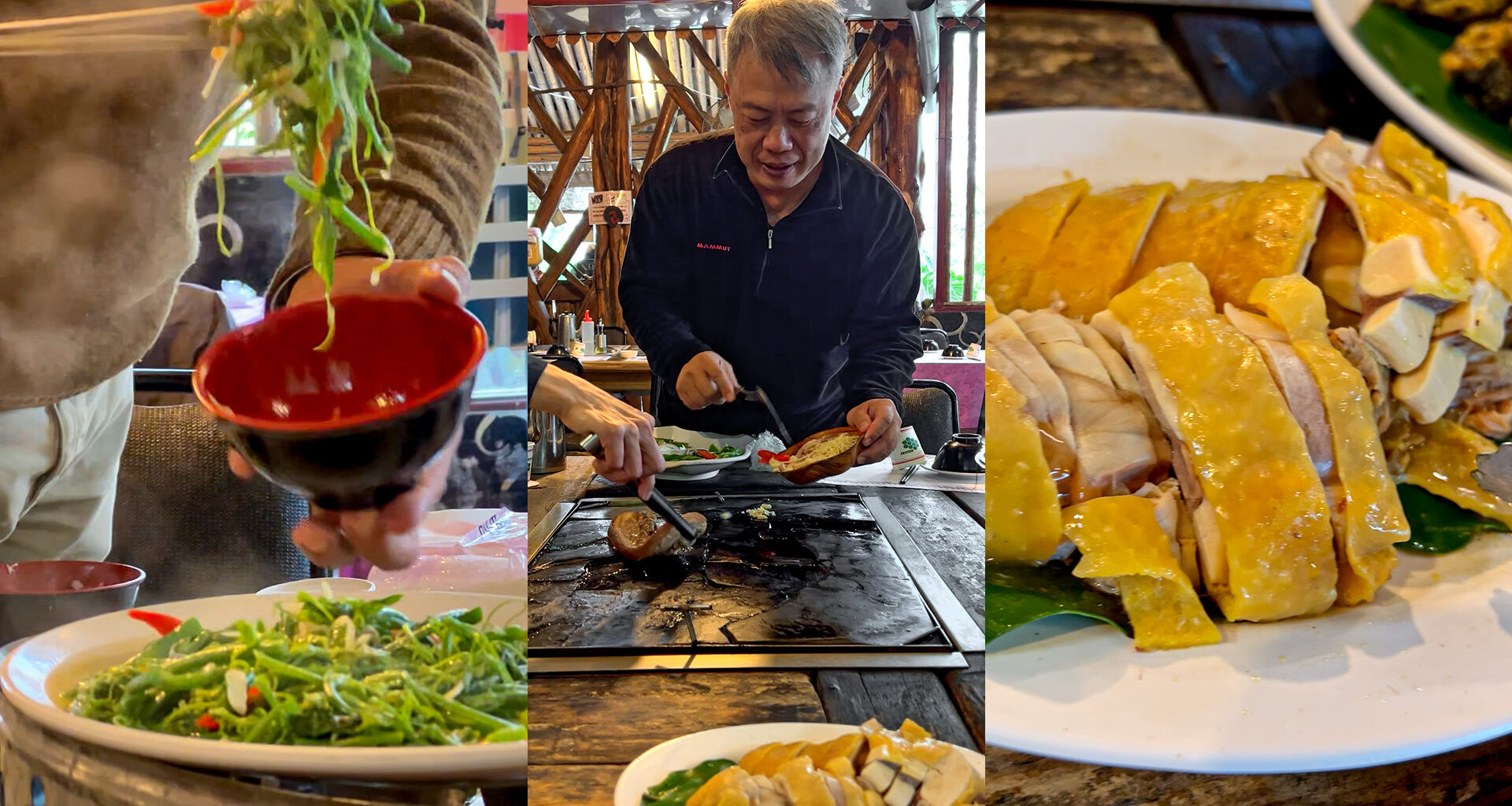After the Citrus Taiwanica planting at the foothills of the forest near Nanzhuang Township, we went to a popular local Saisiyat restaurant called Nayiluwan, many Taiwanese blogs have pages on the food served to get some sense of what aboriginal mountain food of Taiwan is.

At the restaurant mostly mountain ingredients would be cooked over a stone in the centre of the table: a little like a Japanese teppanyaki but far more oriented around vegetables and other side dishes: based on the Saisiyat mountain produce like wild boar, ferns, mushrooms. Like much food I ate in Taiwan, and comparable to Australia in a way, there is an abundance of meat, fish, vegetables and fruit, a kind of demonstration that I remember from my parents in 1970s Melbourne that “we have all the food we need”.
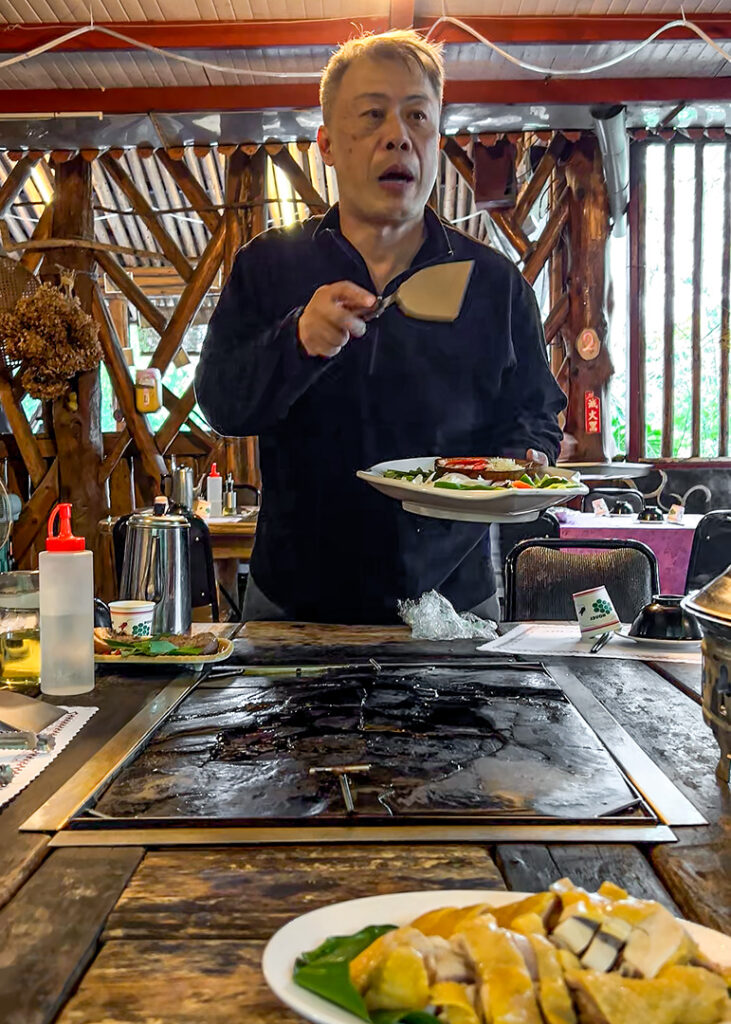
Up in the Saisiyat community village they’re created a kind of market garden with polytunnels to grown vegetables, and I think this supplies the restaurant to return income to the aboriginal community. The restaurant is open mainly at the weekend and is very popular (as the whole area is) with Taiwanese tourists wanting to reconnect with their aboriginal heritage and just breathe the clean mountain air and taste the mountain food of Taiwan.
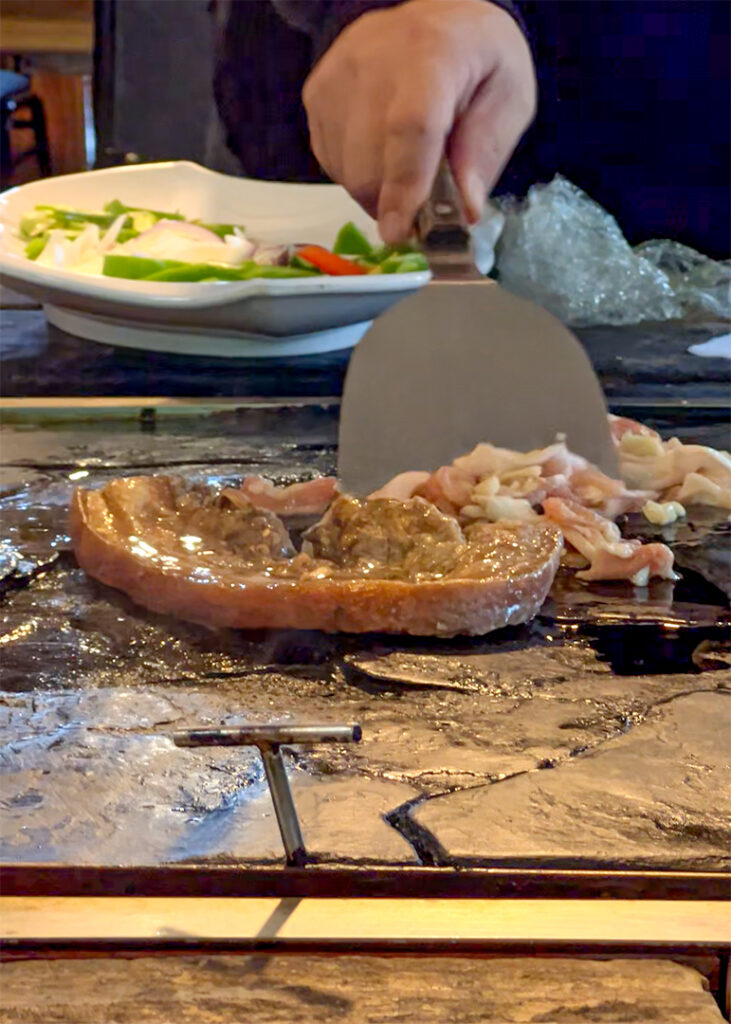
We sat down at large tables that seated about 12 people, and with the 30+ chefs and journalists with us we took up the whole restaurant: meaning they were happy to be open on a Wednesday for us as it’s a great place to taste the mountain food of Taiwan. Typically the cooking is DIY, on this website here you can see how it takes place. So with the stone hot and oil poured on, a huge, thick pre-poached rib chop of wild boar was placed on the grill with some mountain pepper, and next to it sliced onions, peppers and garlic.
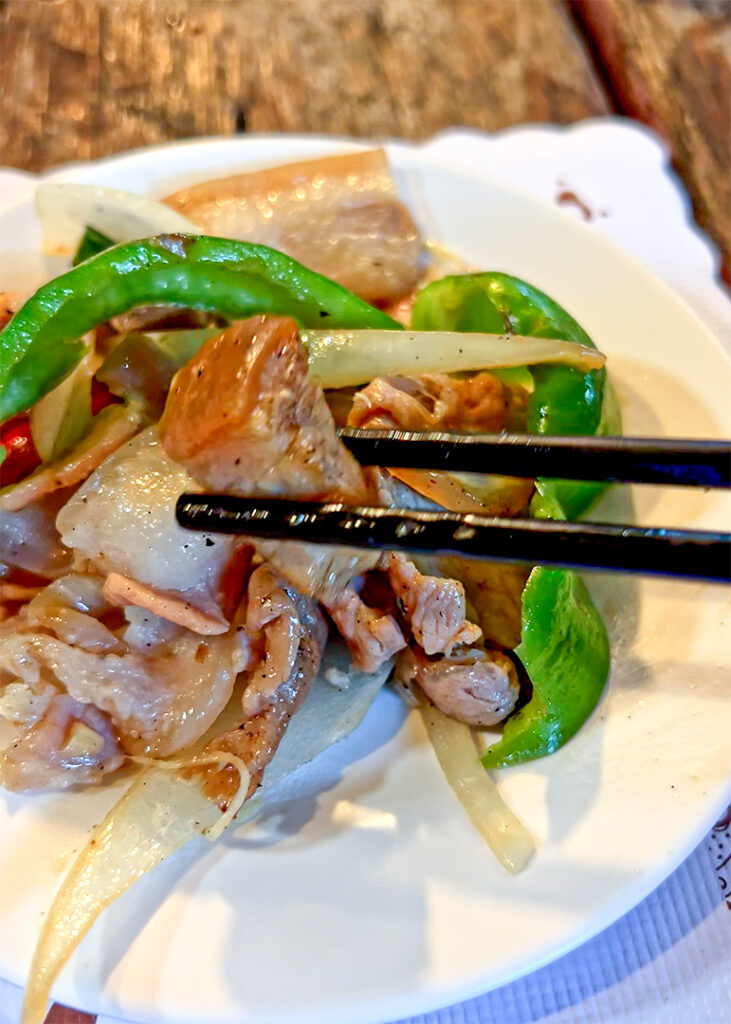
These get served to you cut into chunky pieces together with the onions, peppers and slivers of finely sliced pork fat cooked into a kind of hotplate stir-fry. Very simply seasoned, possibly with a little of the lemongrass-like flavour of the mountain pepper.
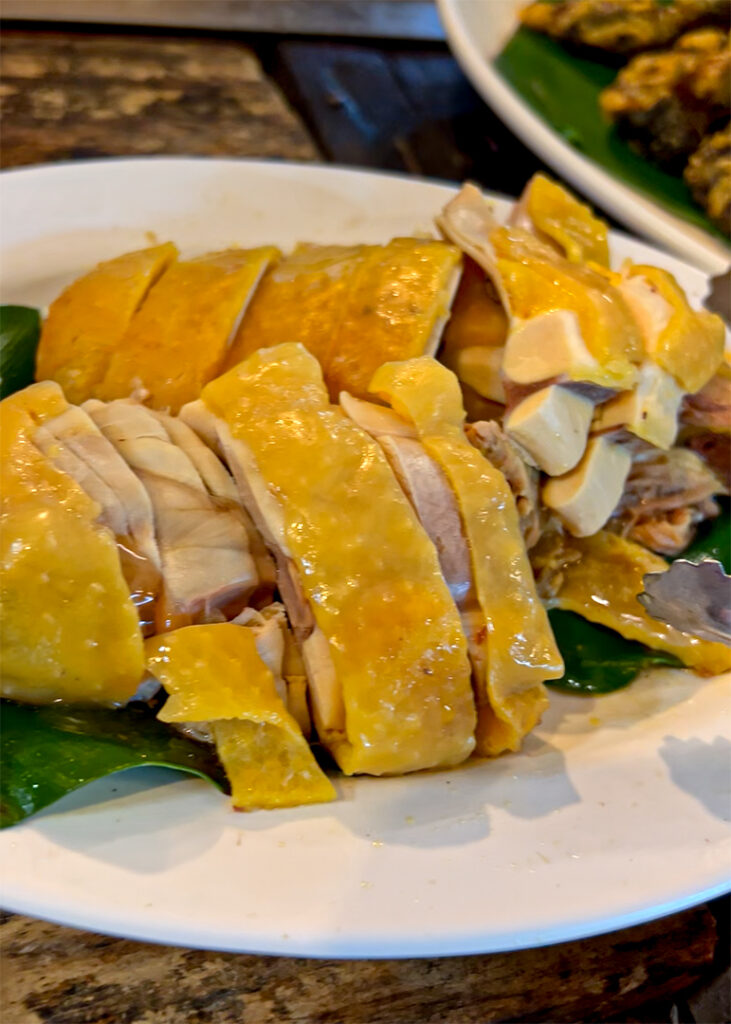
On the table in front of me was poached chicken (they also have pheasant when it’s in season), chopped into pieces cut from the skin through the flesh and the bone. It was much more tender than I expected (sometimes those “very” free range chickens can be older with a noticeable chewiness to them, especially if simply poached). To be frank, navigating pieces with a chopstick into a sauce then into my mouth as I tried to eat away the meat from the bone, is a skill I’m a bit rubbish at. But let me tell you about the orange sauce.
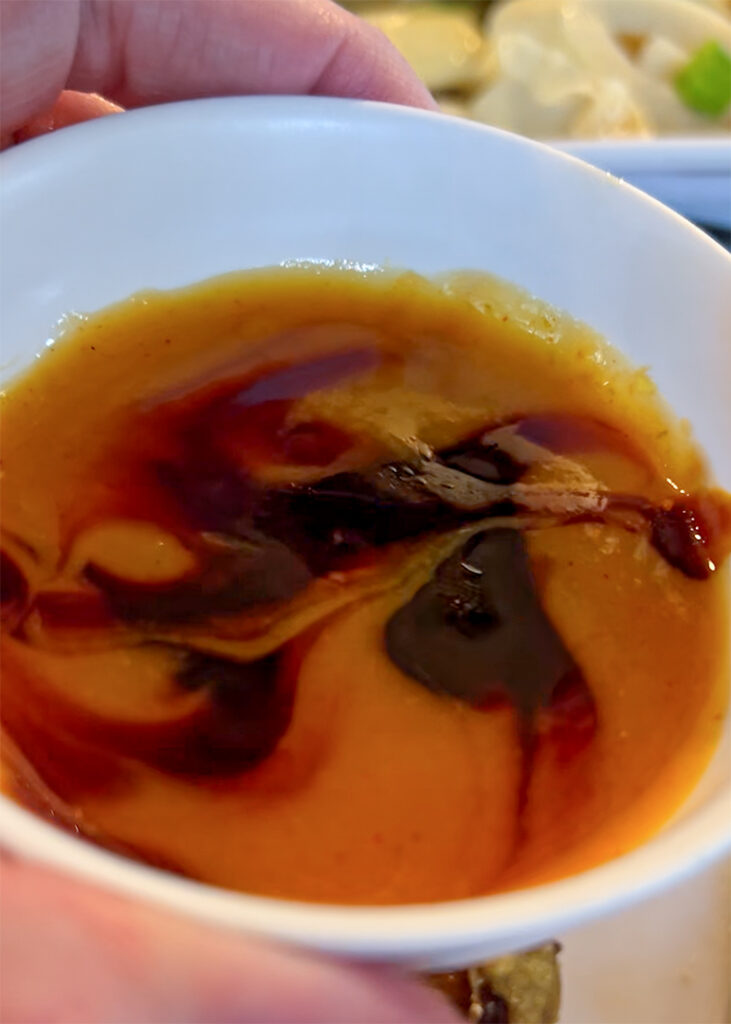
The Hakka Sour Orange Sauce (客家桔醬) is a traditional salted and faintly spiced orange sauce of the Hakka people in Taiwan that is served with poached meats like pork or chicken. It’s a pale russet orange colour with a slightly thick consistency, quite smooth. I’ll tell you about it more in detail soon as the history of how it is made is especially interesting (well to me, as a citrus geek) Here it was swirled with dark soy sauce.

This tangled fresh green dish is a stir-fried Dragon’s Beard (龍鬚菜), a green leafy vegetable used in Taiwanese cuisine. It was very tender, not stringy (I’d worried, as always), and fried with garlic and chilli with a raw egg yolk stirred through at the end.
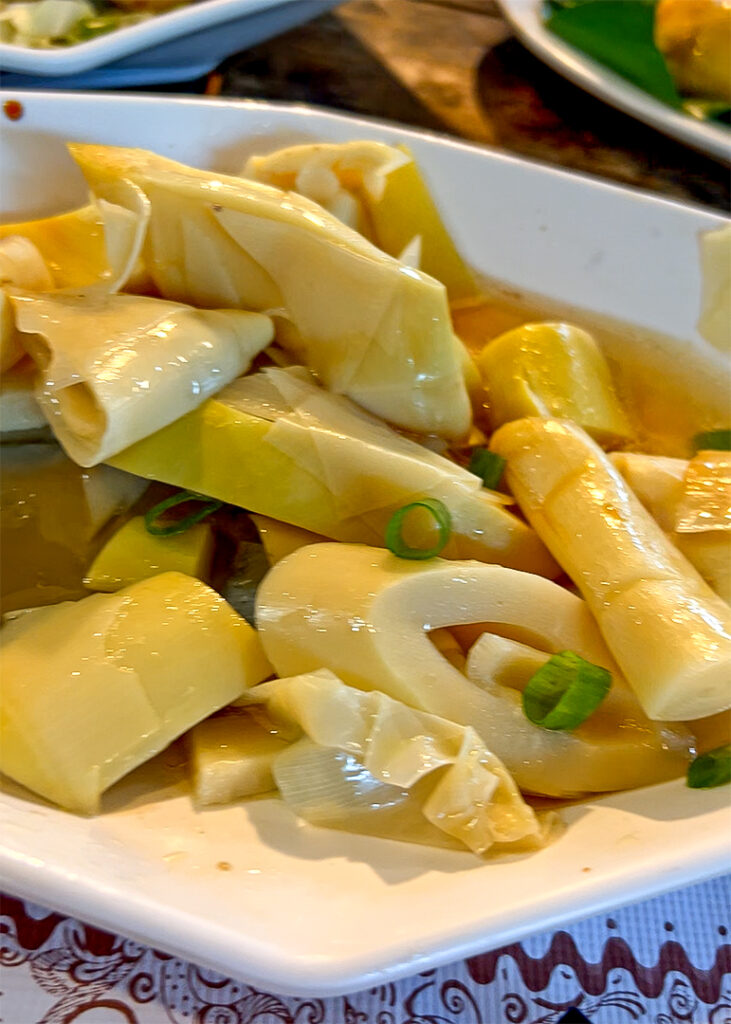
Often in the forests in Taiwan and Japan (those are the only forests I know of first-hand) I’ll see bamboo growing, so the connection between fresh bamboo shoots and the tins I buy at the supermarket makes more sense. So here, fresh (well possibly cooked from frozen, it’s a bit early for their season) bamboo shoots in large chunks were braised with green onions, like you would artichoke hearts. Very simple, delicious.
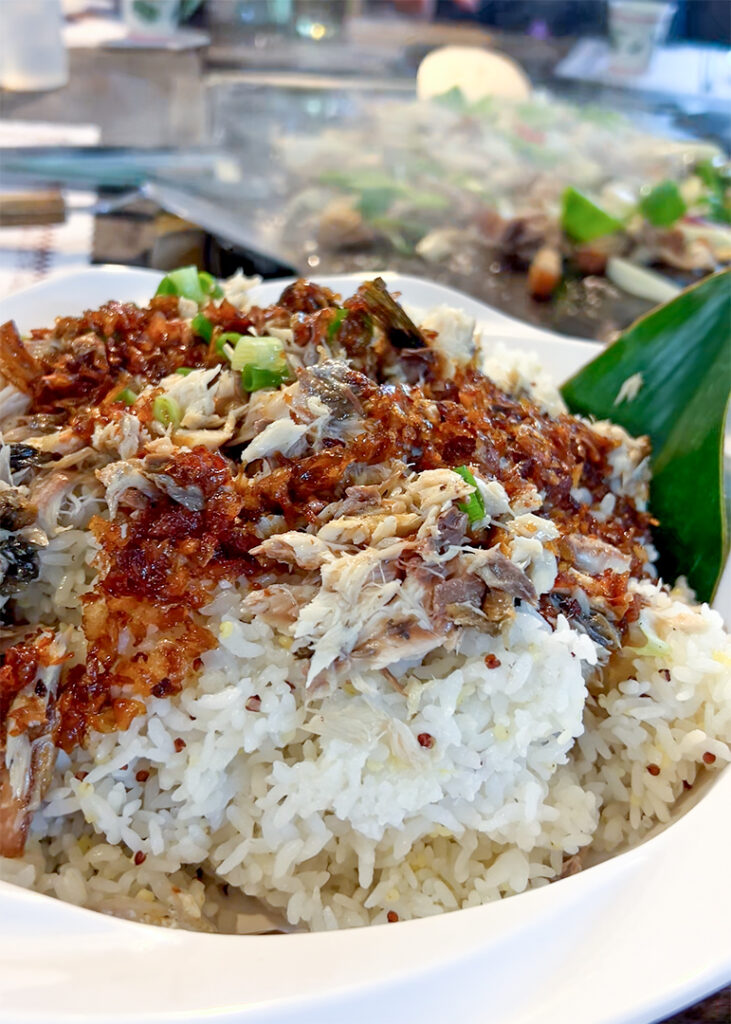
This fish rice dish is very interesting. The locally grown steamed rice (there are 109 hectares of organic rice fields in Miaoli County) is mixed with an indigenous grain related to quinoa called Hóng Lí 紅藜 (Red Goosefoot), together with yellow millet called Xiǎo Mǐ 小米. On top is flaked poached trout with green (spring) onions fried with soy sauce and sugar to a deep reddish colour, to make up a dish known as Trout Flavoured with Green Onions (鱒魚佐上刺蔥提味). Definitely going to start frying spring onions with soy sauce and sugar now, especially when they get past their fresh best. Lovely, simple, reminded me very slightly of the Taimeshi (“sea bream rice”) I’d eaten in Ehime, Japan.

The Trout-Bone Mushroom Soup 鱒魚頭骨鮮菇湯, possibly with sliced pork as well, was great. I like it when soups come toward the end of a meal, it gently fills in any hungry gaps in a gentle way (rather than over stuffing yourself).
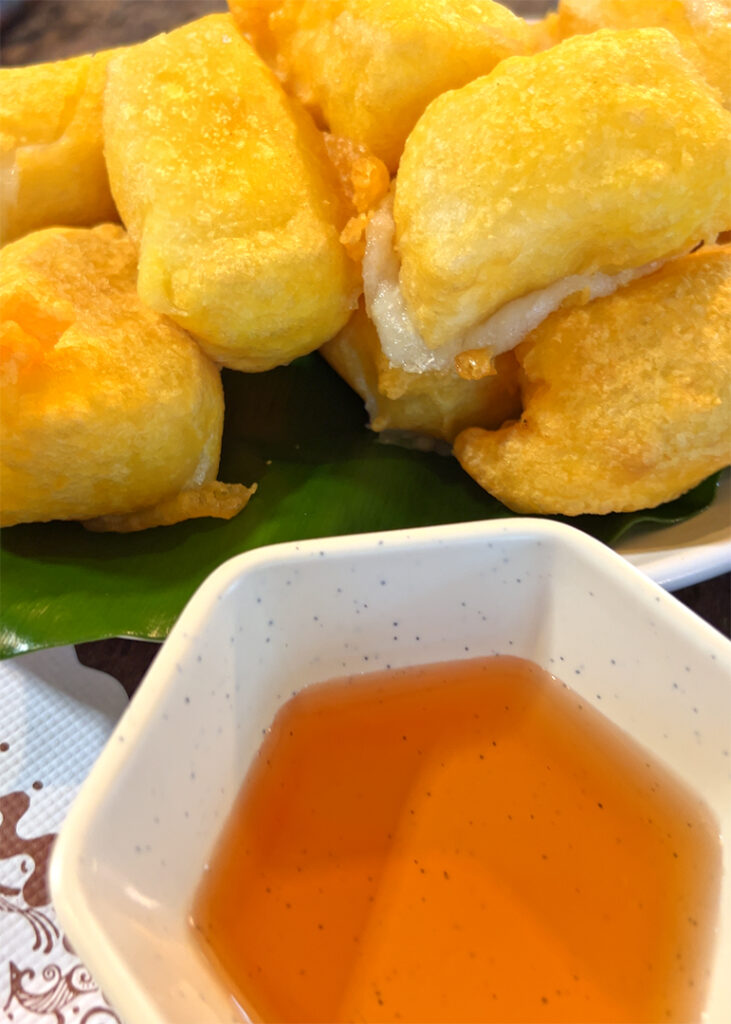
Finally, there was Deep Fried Mochi with Mountain Honey, a speciality, along with fresh oranges and guava.
Nayiruwan Aboriginal Restaurant, Nanzhuang Township, Miaoli County, Taiwan
Address: No. 19-3, 17, Penglai Village, Nanzhuang Township, Miaoli County
Find it on Google Maps here (here’s a link to the Google Maps Plus Code for locations like this that don’t have a street address)
Tel: 0910-988510
Website: www.facebook.com/Nayiluwan
Hours vary, but usually Saturday – Sunday 11:00 ~ 17:00 (check with owner for opening times before travelling)

